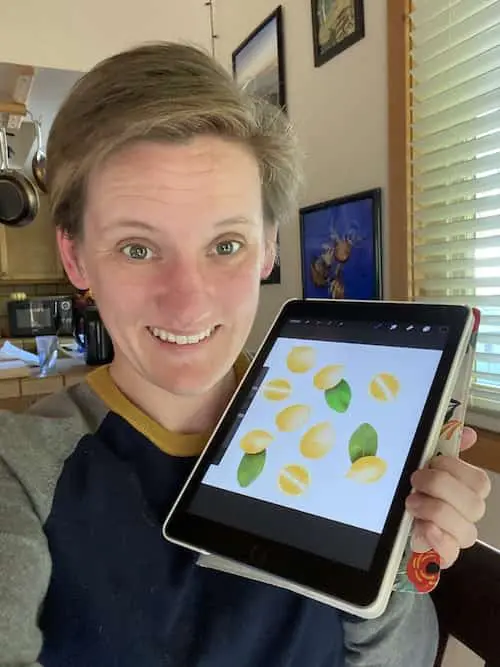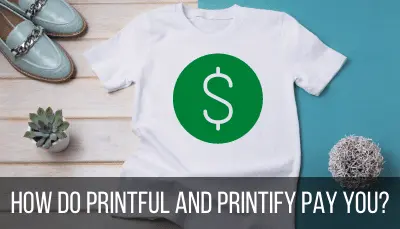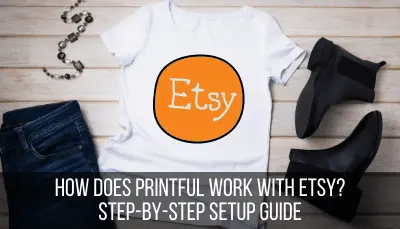Printful is one of my favorite print on demand platforms. Their products are high quality, their platform is easy to use, and their customer service is great. Given how great Printful is, we’ve all wondered if we could just skip the middleman and sell directly from Printful. That would definitely make our ecommerce lives easier, right?
It is not possible to sell directly from Printful because they do not offer online storefronts. Currently, Printful needs to be paired with a selling platform like Shopify, Etsy, Woocommerce, ect in order for customers to be able to see and purchase Printful products.
It would be AMAZING if Printful were to one day release their own storefronts so that Printful could be the one stop shop for your ecommerce store, both on the selling end and the production end.
Alas, for now, we all need to figure out the selling end of things on our own.
I know this can get really confusing. Don’t worry, we’re going to clear everything up.
How Printful Works as a Print on Demand Company
Printful is a print on demand company, which means they produce orders individually as they come in. This saves sellers the large upfront costs of ordering their merchandise in bulk. Printful serves as a production partner and needs to be connected to an online storefront that collects orders.

Let’s use a real-life example to better illustrate this. I had an Etsy shop where people could buy shirts, mugs, and other fun stuff. When someone bought one of my products, they purchased that product from me and my shop.
That said, I didn’t have the equipment I would need to manufacture shirts and mugs with my designs on them on my own. So, I needed to get some help. That’s where Printful came in.
When I would get an order on Etsy, I would send it to Printful. I would pay Printful for the cost of producing and shipping the item. I made sure to account for this cost when listing my products on Etsy, so I’d still make a profit.
For example, let’s say that it would cost me $18 to print and ship a shirt with Printful. So, in my Etsy shop, I would list it for $25. Factor in a few dollars for Etsy fees and I’d still be making a profit.
Ok, so back to producing the product.
Printful does have the equipment needed to make shirts and mugs with my designs on them (plus a ton of other great products), so that’s great.
What’s also great is that, when Printful finished making my customer’s product, they would package it and send it straight to my customer.
When the customer received the product, they would still associate it with my store. The product didn’t say that it had come from Printful and didn’t have Printful branding on it. It’s would still be a product from my store – I just got help manufacturing it.
Printful serves as a middleman, helping sellers produce the products they sell in their stores. Printful is NOT a store itself, which is a very important point. So important that we should talk about it more.
Printful Isn’t a Storefront
Printful does not offer a customer-facing platform for selling products. Orders need to be submitted to Printful by ecommerce sellers on behalf of their customers who purchased their products on other platforms such as Etsy or Shopify.
If you’ve ever done any online shopping, you know the equally fun and soul-sucking nature of scrolling through page after page of products.
Printful doesn’t give customers a place to do endless amounts of scrolling.
Printful is solely a seller-facing platform. It’s where you, as the seller, store a database of products that you can order at any time to fulfill the orders of your customers.
The customer never interacts with Printful. EVER! Sorry, that was dramatic 🙂
This means that you need to pair Printful with a platform that offers an online storefront where your customers can purchase your products. I have a full guide about setting up Printful with your Etsy shop that you should read if you’re interested in selling with Etsy.
Luckily, Printful integrates with a LOT Of selling platforms including Etsy, Shopify, Wix, eBay, WooCommerce, Squarespace, Square, and more (source).
What do I mean by “integrate”? This means that every time you get an order on one of these platforms, the order will be automatically sent to Printful, produced, and shipped to your customer. It’s AMAZING!
There were many many times when an order came into my Etsy shop, was automatically sent to Printful, and shipped to the customer while I did nothing!
Even though it would be neat for Printful to offer their own customer-facing storefronts someday, their integrations are so good that it’s not even really needed.
Personally, I loved the powerhouse pair of Printful and Etsy. Printful is a beast of the PoD world, while Etsy is a beast of the ecommerce world. Sounds good to me.
Selling directly on Printful isn’t possible, but there are a TON of other possibilities that you have with Printful.

Diana has been an artist for over 27 years and has training in drawing, painting, digital drawing and graphic design. Diana’s latest obsession is digitally drawing with Procreate and Procreate Dreams. Diana has experience selling her art across a number of platforms and loves helping other artists learn how to make money from their art as well.


